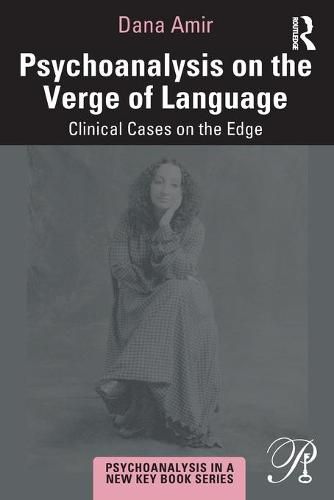Readings Newsletter
Become a Readings Member to make your shopping experience even easier.
Sign in or sign up for free!
You’re not far away from qualifying for FREE standard shipping within Australia
You’ve qualified for FREE standard shipping within Australia
The cart is loading…






This book examines the importance of language and writing in psychoanalytic theory and practice, offering an understanding of how language works can give a deeper insight into the psyche both in clinical practice and everyday life.
Bringing together psychoanalytic insights that hinge on the language of difficult cases , this collection also includes contributions dedicated to meta-study of psychoanalytic writing. The first chapter shows how music includes tonal regions that deploy existing rules and syntax, alongside atonal ones dominated by caesuras, pauses, and tensions. The second chapter discusses the malignant ambiguity of revealing and concealing typical of incestuous situations, pinpointing how the ambiguous language of incest deceives by means of the truth, . The third chapter brings in Virginia Woolf’s character Orlando in order to illustrate two types of gender crossing. Distinctions defined by the linguist Roman Jakobson help in the fourth chapter to offer an integrative description of obsessive-compulsive phenomenon as an interaction between metaphoric and metonymic dimensions, as well as with a third, psychotic dimension. The fifth chapter focuses on what is called the screen confessions typical of the perpetrator’s language. George Orwell’s newspeak is used here to decipher the specific means by which the perpetrator turns his or her inner witness into a blind one. The final chapter uses Roland Barthes’ concepts of studium and punctum to discuss the limits of psychoanalytic writing. As a whole, this book sets the psychoanalytic importance of language in a wider understanding of how language helps to shape and even create internal as well as the external world.
Drawing on insights from psychoanalytic theory and practice, as well as from linguistics and cultural theory, this book will be invaluable for psychoanalysts, psychoanalytic psychotherapists and bibliotherapists, as well as anyone interested in how language forms our reality.
$9.00 standard shipping within Australia
FREE standard shipping within Australia for orders over $100.00
Express & International shipping calculated at checkout
This book examines the importance of language and writing in psychoanalytic theory and practice, offering an understanding of how language works can give a deeper insight into the psyche both in clinical practice and everyday life.
Bringing together psychoanalytic insights that hinge on the language of difficult cases , this collection also includes contributions dedicated to meta-study of psychoanalytic writing. The first chapter shows how music includes tonal regions that deploy existing rules and syntax, alongside atonal ones dominated by caesuras, pauses, and tensions. The second chapter discusses the malignant ambiguity of revealing and concealing typical of incestuous situations, pinpointing how the ambiguous language of incest deceives by means of the truth, . The third chapter brings in Virginia Woolf’s character Orlando in order to illustrate two types of gender crossing. Distinctions defined by the linguist Roman Jakobson help in the fourth chapter to offer an integrative description of obsessive-compulsive phenomenon as an interaction between metaphoric and metonymic dimensions, as well as with a third, psychotic dimension. The fifth chapter focuses on what is called the screen confessions typical of the perpetrator’s language. George Orwell’s newspeak is used here to decipher the specific means by which the perpetrator turns his or her inner witness into a blind one. The final chapter uses Roland Barthes’ concepts of studium and punctum to discuss the limits of psychoanalytic writing. As a whole, this book sets the psychoanalytic importance of language in a wider understanding of how language helps to shape and even create internal as well as the external world.
Drawing on insights from psychoanalytic theory and practice, as well as from linguistics and cultural theory, this book will be invaluable for psychoanalysts, psychoanalytic psychotherapists and bibliotherapists, as well as anyone interested in how language forms our reality.